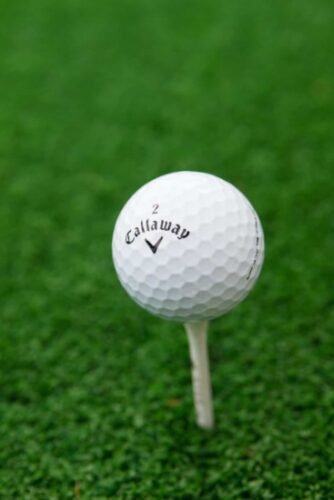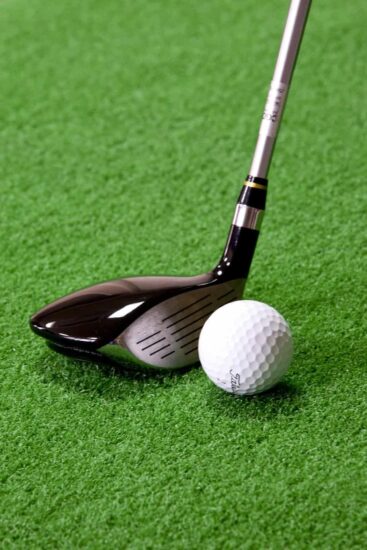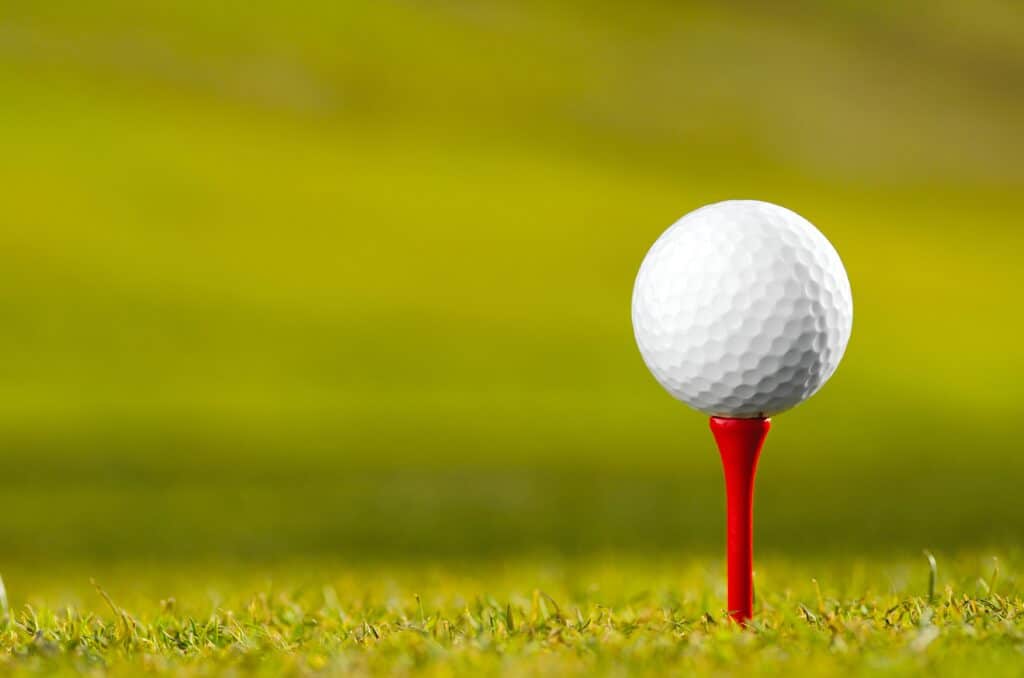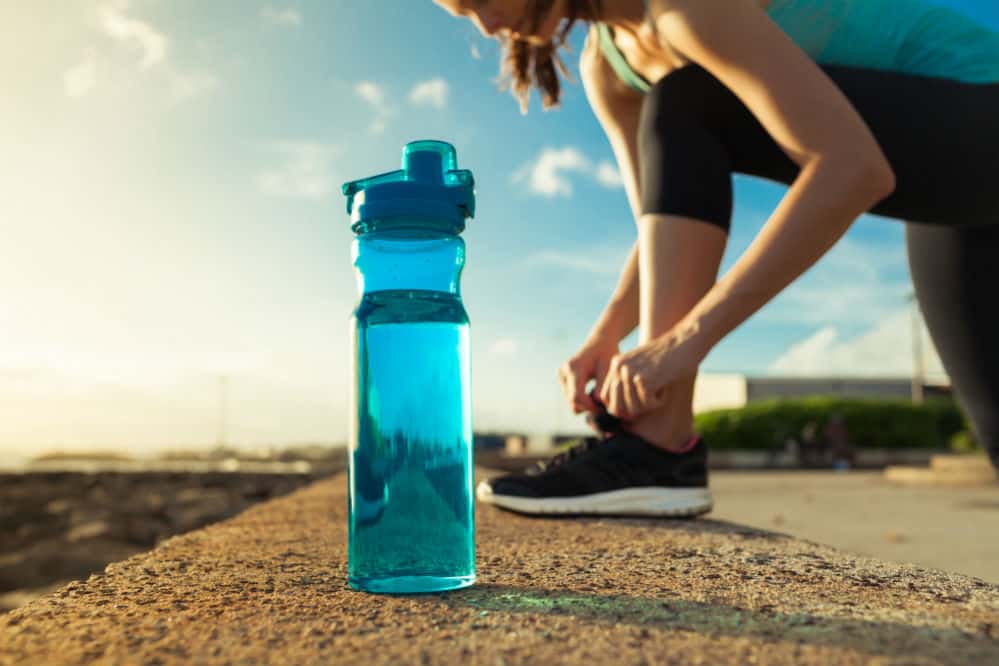Sometimes you just want to clean your balls after the game before storing them, while the collectors need to restore the golf balls they collected in the woods recently before using them. Whichever the case, cleaning a golf ball is easy when you know what you’re doing. However, too many DIYs make it feel like inventing the wheel.
So today, we will break it down and discuss the Dos and Don’ts to avoid ruining your balls. But first, to fully appreciate the cleaning process, you must understand what materials they use, right?
Understanding Material Layering in Golf Balls
Much research goes into the design and manufacture of golf balls. No wonder they keep rolling new models in the market every year. Each time the newer models have better performance compared to the older model. However, the general design concept below applies to most golf balls.
The golf ball manufacture begins with a core – the innermost component. The core determines how much spin will be generated, of course, depending on the type of shot. It also determines how that golf ball feels.
For example, 3 and 4-pieced golf balls start with a medium compression core. Then to increase velocity, they build up their layers. While these balls achieve very high velocities with higher swing speed players, they generate more spin. Other golf balls start with a very softcore, as low as a 16 compression, to counter the multi-spin effect.
The core is mainly a polybutadiene rubber mixed with other materials in specific quantities to alter the final core compression accordingly. Then they apply dye for the final core color. The now cured and colored rubber is fed into a press that compresses it into the spherical core shape. However, the core sizes may be different for each ball.
Next, the core is layered with a rather flexible yet resilient material, mainly to increase the speed of the core. The third layer is a stiffer material but still resilient. Then the 4th layer is yet another stiff material called HFM, a high-modulus resin designed to increase speed.
After the 4th layer, the ball is wrapped with the shiny white polymer material designed to increase speed around the green. The material mainly used on this layer is Surlyn or Urethane, the latter being less durable.
This final layer can be super thin or thick, depending on the manufacturer. And this is the layer we need to clean constantly to maintain the white luster appearance of the golf ball.

Cleaning a Golf Ball
Cleaning should be easy and straightforward for a fairly new golf ball or just lightly used. Just use a soft brush or cloth with mild detergent. However, you need more than just a little scrub for balls that have seen better days.
For starters, there are special detergents for use on really dirty golf balls. For example, tri-sodium phosphate works better instead of soap. And while these detergents work well to clean the surface, it’s not always easy to get rid of the sand and grimy stains. That’s where a little more yet gentle scrubbing comes in handy.
After cleaning, dry the balls with a towel and leave them in an aerated cool area to continue drying. Golf balls can get waterlogged when left in the water for too long. This affects their ability to fly. So you want to ensure your balls are super dry each time you clean them.
A Deeper Look at Detergents
Most people recommend the use of kitchen soap to clean your golf balls. And while some kitchen soaps are mild, others can be too harsh on the ball material. Avoid using detergents with a bleaching agent such as Chlorine (sodium hypochlorite falls in this category) or Peroxygen agents (such as hydrogen peroxide).
Other harsh ingredients to look out for include Synthetic Fragrances and dyes, Phosphates and Phthalates, Formaldehyde and cloth brighteners, as well as Synthetic Nonylphenol Ethoxylates. The list can be longer, but these are the most common, and you can easily spot them.
What Makes a Golf Ball Discolor?
The obvious culprit is continuously using your golf balls without cleaning them, right? The other cause of discoloration that most people are unaware of is leaving them exposed to sunlight for longer periods. The UV rays harm the upper golf ball material, especially golf balls made of Urethane material. A few days of continuous exposure will start to make them discolored.
The third cause of discoloration is prolonged exposure to water. The golf ball’s exterior is exposed to mold and algae in the water. Luckily this is reversible. You just need to soak the balls in mild bleach for 30 minutes, and their color will be restored.

How Do I Get My Golf Ball White Again?
Depending on the cause of the discoloration, most golf balls can be restored back to their original color using bleach. Soak them in a mild bleach solution for 30 minutes and then scrub them gently with a cloth before rinsing them in clean water.
Another trick is to use specific stain-removal ingredients. For example, for golf balls with pen marks, you can remove these stains by rubbing methylated spirit or alcohol-based liquids such as hand sanitizers. Avoid using nail varnish remover because sometimes, depending on how deep the stain is, it could leave a smudge.
It would be best if you also used perfume and artificial-color-free solutions to avoid damaging the outer ball cover.
Should You Clean Golf Balls?
Of course, you should regularly clean your golf balls and clubs for the best shots. But mostly, we clean them back home after the game, right? And sometimes you get too busy and forget, which is ok as long as you’ll remember to clean them before the next game.
But why do we always need to clean them?
The dimples on your golf balls are optimized for the best flight and performance. When covered with dirt or mud, they become less effective, resulting in diminished accuracy and reduced distance. A dirty golf ball also makes poor contact with the club, which then translates to extra strokes.
While on the golf course, sometimes you roll your ball in muddy puddles, and you’d like to clean it first before making another hit. So what should you do? Well, you must follow the rules for cleaning your golf ball on the golf course.
Lifting and cleaning your golf ball on the putting green at any time is ok. However, elsewhere on the golf course, there are four specific rules to follow.
It’s allowed to lift your golf ball when:
- You want to identify your ball or ascertain that the ball is yours before hitting it.
- Your ball is blocking someone else’s path, and they’ve asked you to mark it and move it.
- You’re checking to see if you’re relieved from a certain condition
- To check if your ball is cracked or otherwise damaged.
Of the above rules, only rule number 1 allows you to clean the golf ball just until you’re able to identify it.

People Also Ask:
Does Bleach Damage Golf Balls?
Your golf balls will be fine if you dilute your bleach properly. We discussed above that the outer golf ball layer could be made of Surlyn, a thermoplastic resin, or Urethane, a synthetic rubber. Surlyn is a combination of acid copolymers and metal salts, which makes it stronger and more resistant to natural wear and tear. Similarly, with bleaching agents, Surlyn handles them much better than Urethane. With either of them, the trick is to use mild bleaching agents only when necessary.
Does Water Ruin Golf Balls?
Golf balls can get waterlogged when left in the water for too long. This affects their ability to fly. Depending on how soaked the balls are, sometimes they will dry out completely. However, the inner layers retain the water for the very soaked ones, which means, sadly, they are most like damaged for good.
To identify a waterlogged ball, you can check the bounce. A waterlogged golf ball will have trouble springing back up. Also, when you hit a waterlogged ball, the sound will not have the usual vibrant pang.
Luckily some recycling companies reclaim golf balls in the lakes and ponds, recycle them and resell them cheaply. Although they are not as good as the new ones, they would go a long way for casual practice, especially with beginners.














Although I do not play golf at this period in my life, I do have 20 or so relatives (young and old) who live on golf courses; work on them; or go to one nearly every day in the summer. Mind you we have a short summer here in Northern Alberta so most go to hockey games while the richer ones head for Phoenix or further South for the winter.
Your site is excellent and I will be sending individuals the URL. Your content is even engaging for me and I consider myself a non-golfer. Too bad my younger 73 year old plays golf every day, weather permitting.
Hi, Roger Humbke, and thank you.
Thank you for your kind words.
Great to hear about the benefit of the article too.
Don’t hesitate to contact me to help you with anything else or if you have any questions.
I cleaned some real dirty balls with vinegar and mineral spirits and then with detergent .Can u do damage with mineral spirits?
Hi, Stewart, Steve, and thank you.
I can´t see any reason that could damage the ball. The only reason would be that it was so strong that it could have an effect because of that, but in my opinion, it would be far from the truth.
I researched this today to be sure, and the research confirmed my opinion about it.
Don’t hesitate to contact me to help you with anything else or if you have any questions.